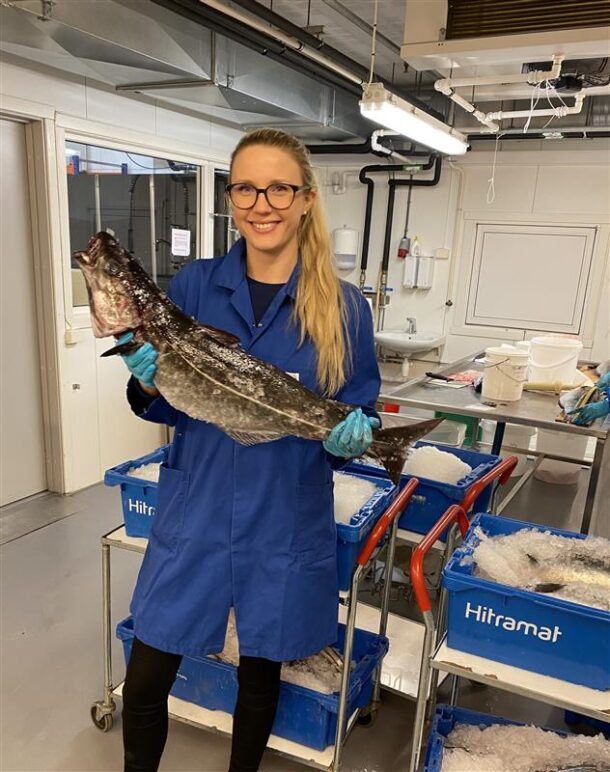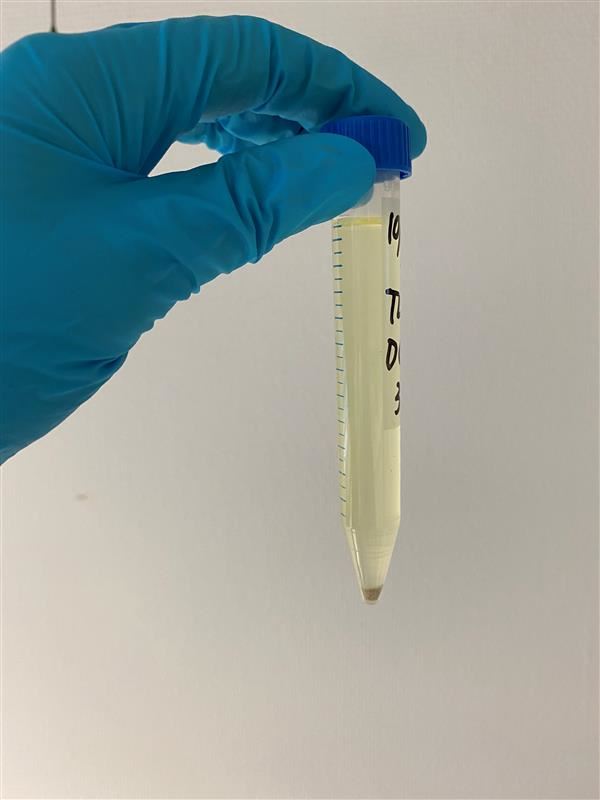Up to two-thirds of the fish caught never reach the dinner table. SINTEF researcher Line Skontorp Meidell wants to fix that.
Seventy percent of the residual raw materials that occur in the ocean-going fishing fleet are discarded back into the sea. The raw materials contain valuable nutrients like omega-3 fatty acids and high-quality proteins, according to the researcher.
“For my doctoral degree, I investigated how we could increase the utilization of residual raw materials on deep-sea fishing vessels. Our research shows that we could be extracting far more value from each fish taken from the sea,” says Meidell.
Seafood residuals can be converted into nutritious ingredients for food and feed. Raw materials from the viscera, liver, roe and head of fish are packed with valuable nutrients that the whole world could use more of.
Proper handling is key
The quality of residual raw materials, such as the viscera and liver, degrades quickly due to the enzymes and bacteria that are naturally found in the raw material. That poses a challenge.
Our research shows that we could be extracting far more value from each fish taken from the sea.
Since the quality of the ingredients is determined by the quality of the raw material, proper handling and preservation on board ship is absolutely necessary to ensure high quality and increased utilization,” Meidell says.

SINTEF researcher Line Skontorp Meidell has completed her PhD on the utilization of residual raw materials from the sea – or viscera, if you will. Photo: SINTEF
Can the viscera be turned into high-grade fish liver oil?
Whitefish store most of their fat in their liver. The liver is therefore manually sorted out for the production of fish liver oil in Norway’s coastal fleet. Such sorting operations are resource-intensive and can be challenging to carry out on board.
“That’s why we have looked more closely at whether it would be possible to use the whole fraction of the viscera to produce oil without sorting out the liver,” says Meidell.
The study results indicate that sorting out the liver is not necessary. Both the liver and viscera from cod and saithe can be used to produce high-quality oil for human consumption that is rich in omega-3 fatty acids.
Cold storage a must
Experiments conducted on board the ship showed that processing the raw material immediately after the catch is critical to achieving the highest possible oil quality.
“However, we found that the raw material could be refrigerated for up to two days and still be used to produce oil for human consumption,” Meidell says.

From fish viscera to gold: These droplets contain valuable peptides and omega-3, to name a few of their health nutrients. Photo: SINTEF
This provides greater flexibility on board, especially in bad weather or variable catch size and composition.
Silaging is a preservation method in which acid is added to control the growth of unwanted microorganisms and ensure optimal conditions for the enzymes in the raw material. In principle, this is the same as when grass is stored for animal feed in round bales. The resulting silage promotes hydrolysis, which can enhance nutrient quality in food.
Silage products are often perceived as being of low-quality. But the researchers’ findings show that the quality of the oil can be significantly improved by adding acid with antioxidants immediately after catch to start the preservation process.
“Although viscera with liver contain a lot of fat, we found that sorting out the liver did not affect the protein content or the quality of the protein hydrolysates,” says the SINTEF researcher.
High demand
According to Meidell, the residual raw material that is currently discarded at sea represents a huge opportunity to meet the demand for nutrients in Norwegian food production – either directly or indirectly through feed.
Fish waste can be turned into valuable nutritional ingredients by developing good strategies for storage, sorting and preservation.
“Maximizing the use of raw material can help reduce the loss of important food resources and at the same time offer new, sustainable sources of omega-3 and proteins that the world needs more of,” says Meidell.
The research work is funded by the Research Council of Norway through the SUPREME project.


